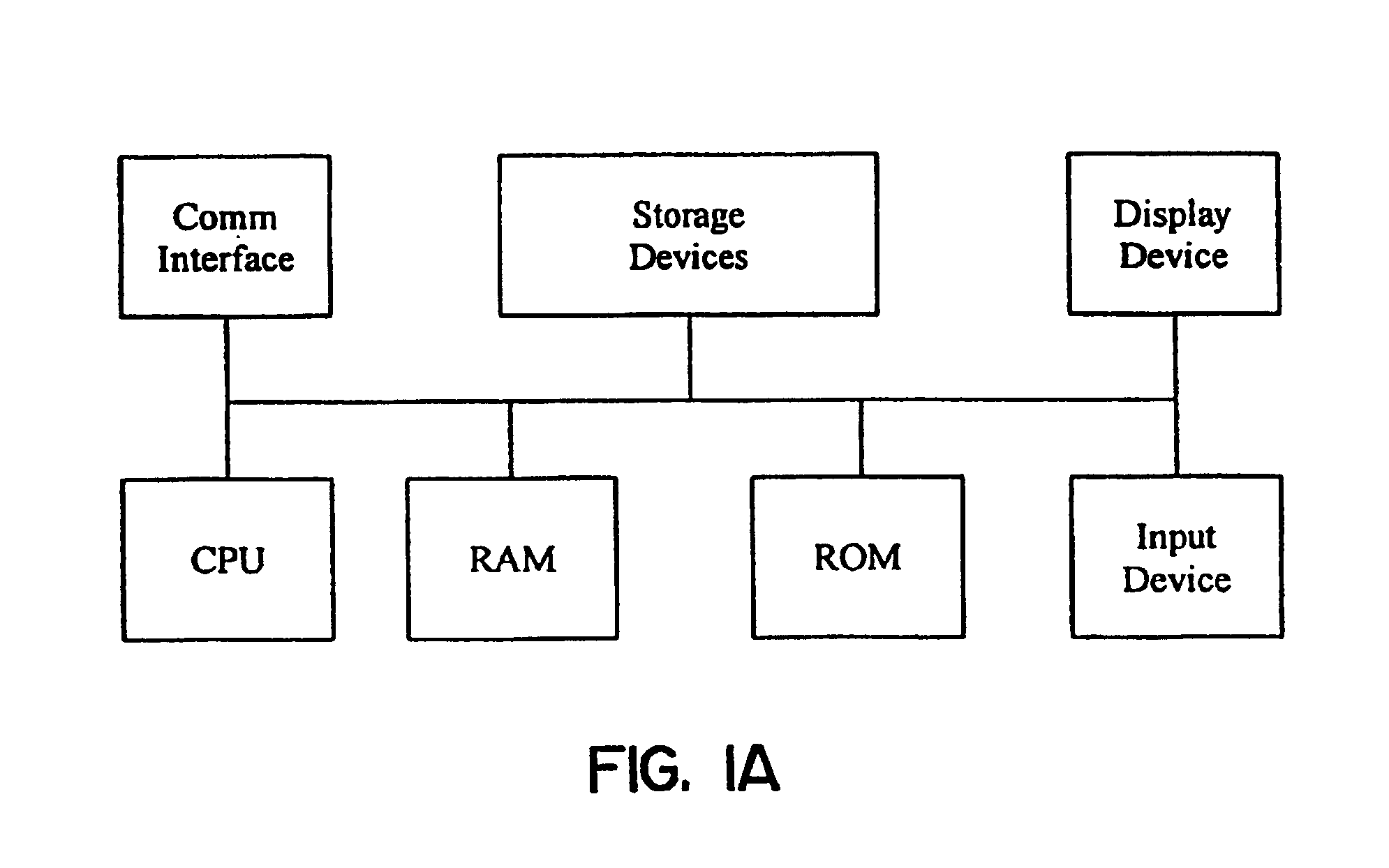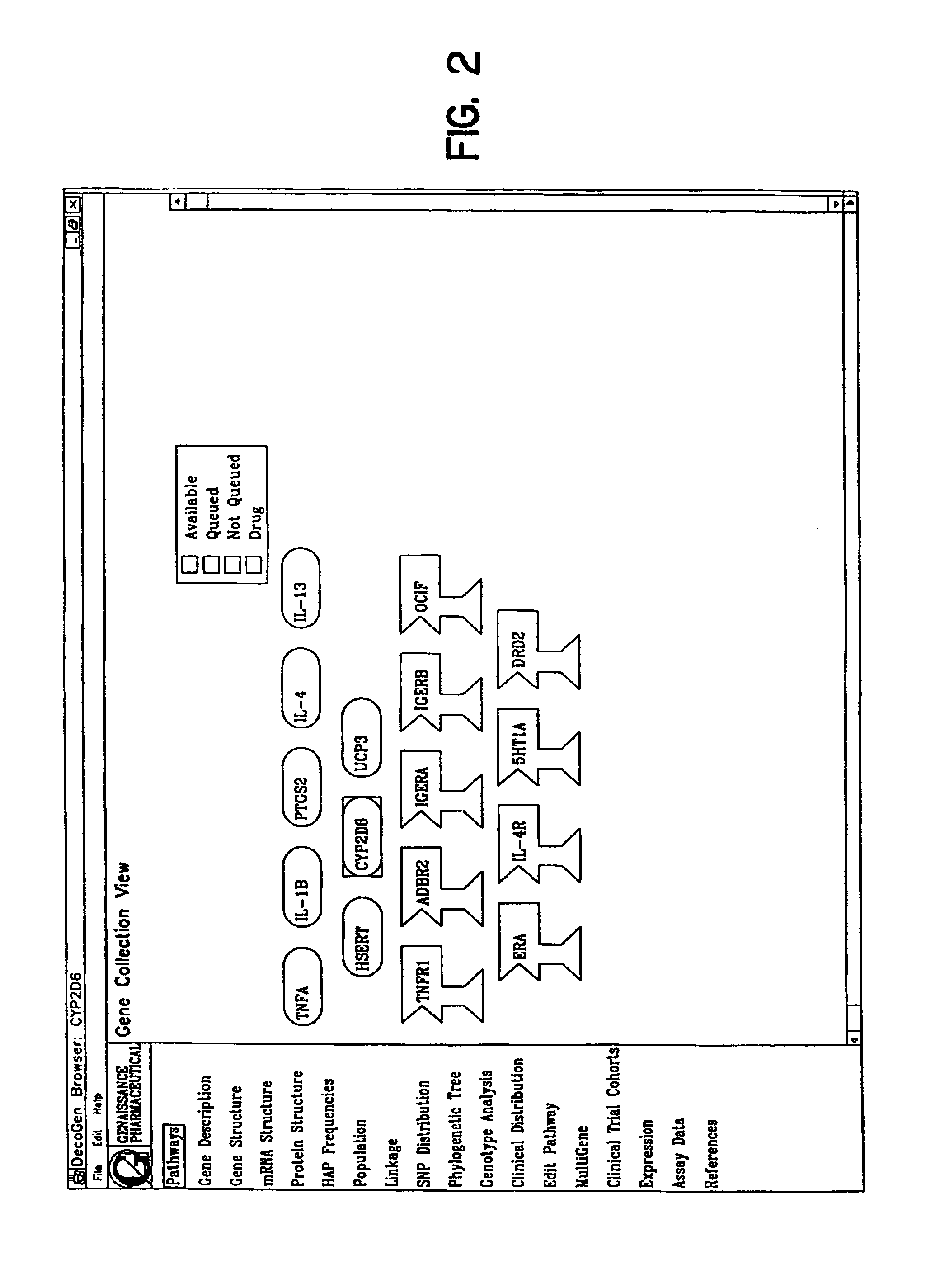Methods for obtaining and using haplotype data
a technology of haplotype data and haplotypes, applied in the field of gene analysis and the study of dna variation, can solve the problems of paralysis of breathing muscles, waking up from anesthesia, and patients with adverse reactions, and achieve the effect of reducing time and effor
- Summary
- Abstract
- Description
- Claims
- Application Information
AI Technical Summary
Benefits of technology
Problems solved by technology
Method used
Image
Examples
example 1
H. EXAMPLE 1
Simulated Clinical Trial
[0738]For illustration, we will use a particular example that shows how the CTS™ method works, and how the DecoGen™ application is used. For this we have simulated a data set. Polymorphisms for the gene CYP2D6 were obtained from the literature. From those we constructed 10 haplotypes. A set of individual subjects were created and assigned a value of the variable “Test” in the range from 0.0-1.0. They were also assigned 2 of the haplotypes. This data set simulates what would come from a clinical trial in which patients were haplotyped and tested for some clinical variable. Most individuals have a relatively low value of the Test measure, but a small number have a large value. This simulates the case where a small number of individuals taking a medication have an adverse reaction. Our goal is to find genetic markers (i.e. haplotypes) that are correlated with this adverse event.
[0739]Step 1. Identify candidate genes. CYP2D6 is the sample candidate ge...
example 2
I. EXAMPLE 2
[0755]1. Provision of Clinical Data
[0756]DNA sequence information for a cohort of normal subjects was obtained and entered into the database as described previously. For this example, 134 patients, all of whom came to the clinic having an asthmatic attack, were recruited. Each patient had a standard spirometry workup upon entering the clinic, was given a standard dose of albuterol, and was given a followup spirometry workup 30 minutes later. Blood was drawn from each patient, and DNA was extracted from the blood sample for use in genotyping and haplotyping. Clinical data, in the form of the response of the asthmatic patients to a single dose of nebulized albuterol, was obtained from the asthmatic patients, as described previously (Yan, L., Galinsky, R. E., Bernstein, J. A., Liggett, S. B. & Weinshilboum, R. M. Pharmacogenetics, 2000, 10:261-266) The clinical data was entered into the database, and displayed as in FIG. 29B.
[0757]2. Determination of ADBR2 Genotypes and Hap...
PUM
| Property | Measurement | Unit |
|---|---|---|
| distances | aaaaa | aaaaa |
| distances | aaaaa | aaaaa |
| distances | aaaaa | aaaaa |
Abstract
Description
Claims
Application Information
 Login to View More
Login to View More - R&D
- Intellectual Property
- Life Sciences
- Materials
- Tech Scout
- Unparalleled Data Quality
- Higher Quality Content
- 60% Fewer Hallucinations
Browse by: Latest US Patents, China's latest patents, Technical Efficacy Thesaurus, Application Domain, Technology Topic, Popular Technical Reports.
© 2025 PatSnap. All rights reserved.Legal|Privacy policy|Modern Slavery Act Transparency Statement|Sitemap|About US| Contact US: help@patsnap.com



